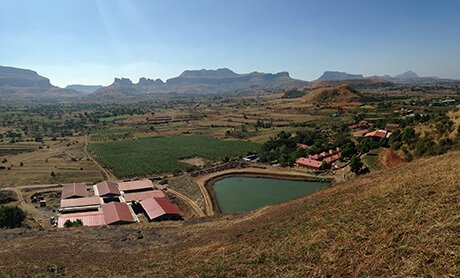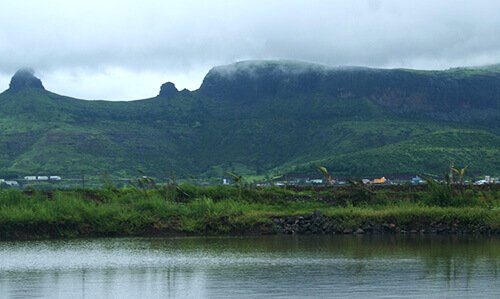The original word in the term Bhramari is Bhramar (humming bee). This pranayam relates to the word bhramar, i. e. the sound that bhramar emits. The characteristics of this pranayama is to create a sound like that of the humming bee while performing Pooraka or Rechaka. Hence, we can state that the name is quite appropriate.
The earlier dos and don'ts and cautions apply to this type too. The pranayama should be studied while sitting in asanas such as Padmasan or Simhasan. Since the left or right nostril is not to be used independently, there is no need for Pranavmudra. The entire action is with both the nostrils.
To perform the Pooraka efficiently, first perform a gradual Rechaka and then start Pooraka. While inhaling air, the soft palate of the breathing tube in the throat area should be pressed a little so as to obstruct the air flow. Since this palate is soft and flexible, it starts vibrating and a peculiar sound is generated. Initially, the sound is hoarse and odd. However, with continuous practice, the sound turns melodious and similar to the beautiful tone of the humming bee. This sound is of a lower volume than that in Rechaka. Hence, it is termed as Bhramar Dhwani (sound of humming bee). When the Pooraka with a constant pace and the sound is complete, then Kumbhaka is performed.
When the Pooraka is completed, both the nostrils are closed with pranavmudra, all the three bandhas are fixed and Kumbhaka is performed. No sound is expected while being in Kumbhaka. All the three bandhas should be observed as described earlier. Initially, the duration of the Kumbhaka should be same as that of Pooraka and then gradually it should be increased with continued practice to be four times that of Pooraka.
After completion of Kumbhaka, the bandhas should be released in the order defined earlier and Rechaka should be started. The Rechaka, too should generate sound as that in Pooraka. However, the sound generated here is more in volume than that in Pooraka. This can be termed as Bhraamari Naad (sound of female humming bee) this is more melodious than earlier. The sound should be gradual and at a constant pace without any ups and downs. With continued practice, the sound will be more clear and pleasing to the ears. The units in Rechaka should be double that that in Pooraka. After Rechaka, the next rotation can be immediately commenced.
The duration of the study of Pranayama cannot be limited to the duration of one cycle only. Maintaining the same proportion of Pooraka, Kumbhaka and Rechaka in one cycle, the number of cycles that can be performed at a stretch will define the duration for the Pranayama study. During this syllabus, the Pranayama should be practiced for at least ten minutes duration. Initially, only a single cycle is performed. However, with practice, the duration can be increased.
The effects of this Pranayama have not been researched and hence cannot be definitely stated. Earlier, we have reviewed the effects of Kumbhaka performed with all the three bandhas. Those effects are no doubt present, but due to the sound, the concentration of the mind is also facilitated. The vibrations generated in the body due to the sound, also have a good effect on the internal organs and mainly the brain and the nervous system. However, the definite effects cannot be stated today.
| COURSE | Venue |
Phone - +91-9822770727
E-mail - yoga@yogapoint.com or yogapoint108@gmail.com

Yoga Vidya Dham, Kaivalya Nagari,
College Road, Nashik - 422005.
Maharashtra, India.
Phone - +91-9822770727 (for courses in ENGLISH)
+91-253-2318090 (For courses, in HINDI or MARATHI)
(Please call during 9.00 AM to 5 PM Indian Time)
E-mail - yoga@yogapoint.co or yogapoint108@gmail.com
Village Talwade, Trimbak, Nasik
Maharashtra,India.
Phone - +91-9822770727
E-mail - yoga@yogapoint.com or yogapoint108@gmail.com
